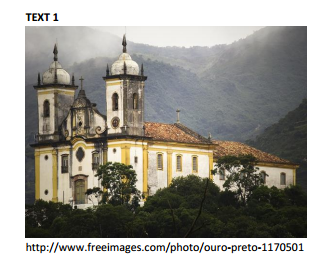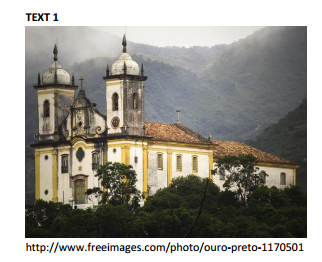A rede de dados que permite a ligação de redes e equipamentos em uma área metropolitana, no entanto, sem alcançar uma grande área geográfica, como um país ou continente, é:
Uma técnica utilizada para a distribuição de conteúdo na Internet é Content Distribution Networks – CDNs. A respeito dessa técnica, é correto afirmar que:
Uma rede possui um tempo médio entre falhas de 2.000 horas e tempo médio de reparação de 50 horas. Essa rede opera ininterruptamente por um período de 9 meses. Considerando 30 dias para o mês, a disponibilidade dessa rede, em horas, é aproximadamente de:
A respeito do Common Management Information Protocol – CMIP, considere as seguintes afirmativas: I O protocolo CMIP é o protocolo OSI do Nível de Rede orientado a conexão. II No ambiente de gerenciamento OSI, o protocolo CMIP é utilizado para definir as regras de comunicação entre os processos gerente e agente. III O CMIP é incompatível com o Common Management Information Service - CMIS. Está correto somente o que se afirma em:
A respeito da Next Generation Networks - NGN analise as seguintes afirmativas. I Utiliza-se de tecnologias baseadas em padrões abertos definidos pelo ITU-T. II Tem por objetivo a convergência dos serviços existentes em uma única arquitetura de serviços convergentes. III Possui uma infraestrutura de redes independente. Está correto somente o que se afirma em:
A variação estatística do atraso na entrega de dados na transmissão de uma mensagem na rede, que pode resultar na perda da informação no destino, pode ser causado por:
A aplicação do princípio da proveniência tem como resultado e elimina, respectivamente:
Considere uma instituição pública que tem programas de retenção e eliminação de documentos, e que segue procedimentos estabelecidos para recolher à instituição arquivística pública os de valor permanente. Tal instituição se encontra no seguinte nível de aplicação da gestão de documentos:
Considere um acervo em idade corrente, que já está classificado. Para permitir a racionalização do fluxo documental e a implementação de um programa de gestão de documentos, ele deve ser:
São exemplos de documentos de guarda temporária:
O ambiente é um dos principais agentes de deterioração do papel. Para preservar um acervo, deve-se fazer o controle ambiental, que envolve várias ações, durante:
Segundo o Decreto nº 7.724, de 16 de maio de 2012, que regulamenta a Lei nº 12.527, de 18 de novembro de 2011, existem informações a serem fornecidas aos cidadãos na chamada transparência ativa. Essas informações serão obtidas pelos cidadãos por meio de:

Mining tourism in Ouro Preto
Ouro Preto is surrounded by a rich and varied natural
environment with waterfalls, hiking trails and native vegetation
partially protected as state parks. Parts of these resources are
used for tourism. Paradoxically, this ecosystem contrasts with the
human occupation of the region that produced, after centuries, a
rich history and a cultural connection to mining, its oldest
economic activity which triggered occupation. The region has an
unlimited potential for tourism, especially in specific segments
such as mining heritage tourism, in association or not with the
existing ecotourism market. In fact, in Ouro Preto, tourism,
history, geology and mining are often hard to distinguish; such is
the inter-relationship between these segments.
For centuries, a major problem of mining has been the reuse of
the affected areas. Modern mining projects proposed solutions to
this problem right from the initial stages of operation, which did
not happen until recently. As a result, most quarries and other
old mining areas that do not have an appropriate destination
represent serious environmental problems. Mining tourism
utilizing exhausted mines is a source of employment and income.
Tourism activities may even contribute to the recovery of
degraded areas in various ways, such as reforestation for leisure
purposes, or their transformation into history museums where
aspects of local mining are interpreted.
Minas Gerais, and particularly Ouro Preto, provides the strong
and rich cultural and historical content needed for the
transformation of mining remnants into attractive tourism
products, especially when combined with the existing cultural
tourism of the region. Although mining tourism is explored in
various parts of the world in extremely different social, economic,
cultural and natural contexts, in Brazil it is still not a strategy
readily adopted as an alternative for areas affected by mining
activities.
(Lohmann, G. M.; Flecha, A. C.; Knupp, M. E. C. G.; Liccardo, A.
(2011). Mining tourism in Ouro Preto, Brazil: opportunities and
challenges. In: M. V. Conlin; L. Jolliffe (eds). Mining heritage and
tourism: a global synthesis. New York: Routledge, pp. 194-202.)
Mark the statements below as TRUE (T ) or FALSE ( F) according to Text 1. ( ) Tourism may actually be quite beneficial to some degraded mining areas. ( ) Mining tourism has recently been promptly embraced by Brazilian regions. ( ) Ouro Preto is attracting people because mining is one of its most recent activities. The correct sequence is:

Mining tourism in Ouro Preto
Ouro Preto is surrounded by a rich and varied natural
environment with waterfalls, hiking trails and native vegetation
partially protected as state parks. Parts of these resources are
used for tourism. Paradoxically, this ecosystem contrasts with the
human occupation of the region that produced, after centuries, a
rich history and a cultural connection to mining, its oldest
economic activity which triggered occupation. The region has an
unlimited potential for tourism, especially in specific segments
such as mining heritage tourism, in association or not with the
existing ecotourism market. In fact, in Ouro Preto, tourism,
history, geology and mining are often hard to distinguish; such is
the inter-relationship between these segments.
For centuries, a major problem of mining has been the reuse of
the affected areas. Modern mining projects proposed solutions to
this problem right from the initial stages of operation, which did
not happen until recently. As a result, most quarries and other
old mining areas that do not have an appropriate destination
represent serious environmental problems. Mining tourism
utilizing exhausted mines is a source of employment and income.
Tourism activities may even contribute to the recovery of
degraded areas in various ways, such as reforestation for leisure
purposes, or their transformation into history museums where
aspects of local mining are interpreted.
Minas Gerais, and particularly Ouro Preto, provides the strong
and rich cultural and historical content needed for the
transformation of mining remnants into attractive tourism
products, especially when combined with the existing cultural
tourism of the region. Although mining tourism is explored in
various parts of the world in extremely different social, economic,
cultural and natural contexts, in Brazil it is still not a strategy
readily adopted as an alternative for areas affected by mining
activities.
(Lohmann, G. M.; Flecha, A. C.; Knupp, M. E. C. G.; Liccardo, A.
(2011). Mining tourism in Ouro Preto, Brazil: opportunities and
challenges. In: M. V. Conlin; L. Jolliffe (eds). Mining heritage and
tourism: a global synthesis. New York: Routledge, pp. 194-202.)
The phrase “As a result” (l.16) can be replaced by:
TEXT 2
Innovation is the new key to survival
[…]
At its most basic, innovation presents an optimal strategy for
controlling costs. Companies that have invested in such technologies
as remote mining, autonomous equipment and driverless trucks and
trains have reduced expenses by orders of magnitude, while
simultaneously driving up productivity.
Yet, gazing towards the horizon, it is rapidly becoming clear that
innovation can do much more than reduce capital intensity.
Approached strategically, it also has the power to reduce people and
energy intensity, while increasing mining intensity.
Capturing the learnings
The key is to think of innovation as much more than research and
development (R&D) around particular processes or technologies.
Companies can, in fact, innovate in multiple ways, such as leveraging
supplier knowledge around specific operational challenges,
redefining their participation in the energy value chain or finding new
ways to engage and partner with major stakeholders and
constituencies.
To reap these rewards, however, mining companies must overcome
their traditionally conservative tendencies. In many cases, miners
struggle to adopt technologies proven to work at other mining
companies, let alone those from other industries. As a result,
innovation becomes less of a technology problem and more of an
adoption problem.
By breaking this mindset, mining companies can free themselves to
adapt practical applications that already exist in other industries and
apply them to fit their current needs. For instance, the tunnel boring
machines used by civil engineers to excavate the Chunnel can vastly
reduce miners' reliance on explosives. Until recently, those machines
were too large to apply in a mining setting. Some innovators,
however, are now incorporating the underlying technology to build
smaller machines—effectively adapting mature solutions from other
industries to realize more rapid results.
Re-imagining the future
At the same time, innovation mandates companies to think in
entirely new ways. Traditionally, for instance, miners have focused on
extracting higher grades and achieving faster throughput by
optimizing the pit, schedule, product mix and logistics. A truly
innovative mindset, however, will see them adopt an entirely new
design paradigm that leverages new information, mining and energy
technologies to maximize value. […]
Approached in this way, innovation can drive more than cost
reduction. It can help mining companies mitigate and manage risks,
strengthen business models and foster more effective community
and government relations. It can help mining services companies
enhance their value to the industry by developing new products and
services. Longer-term, it can even position organizations to move the
needle on such endemic issues as corporate social responsibility,
environmental performance and sustainability.
(http://www2.deloitte.com/content/dam/Deloitte/ru/Document
s/energy-resources/ru_er_tracking_the_trends_2015_eng.pdf)
The title suggests that the expression “sustainable mining” may:

